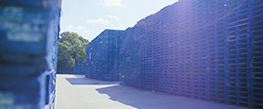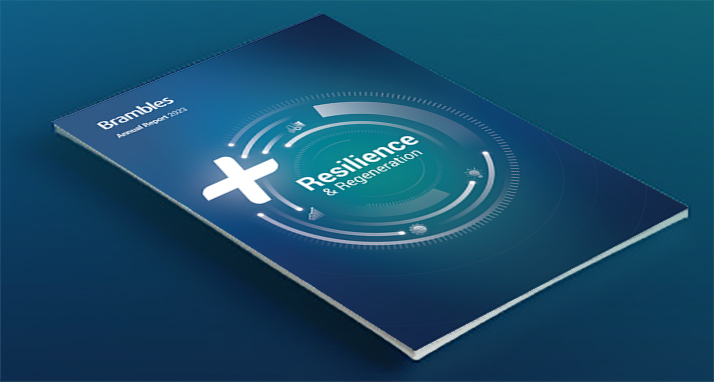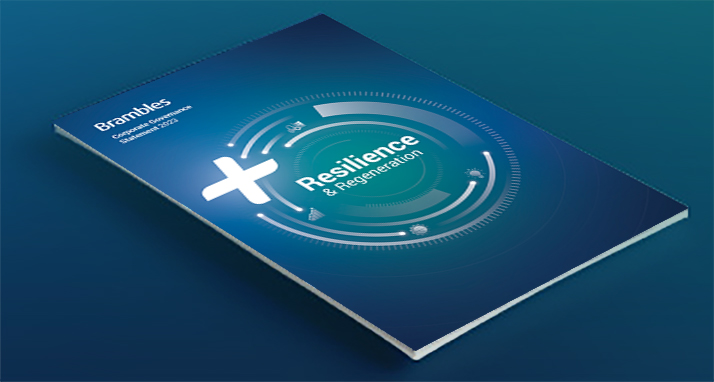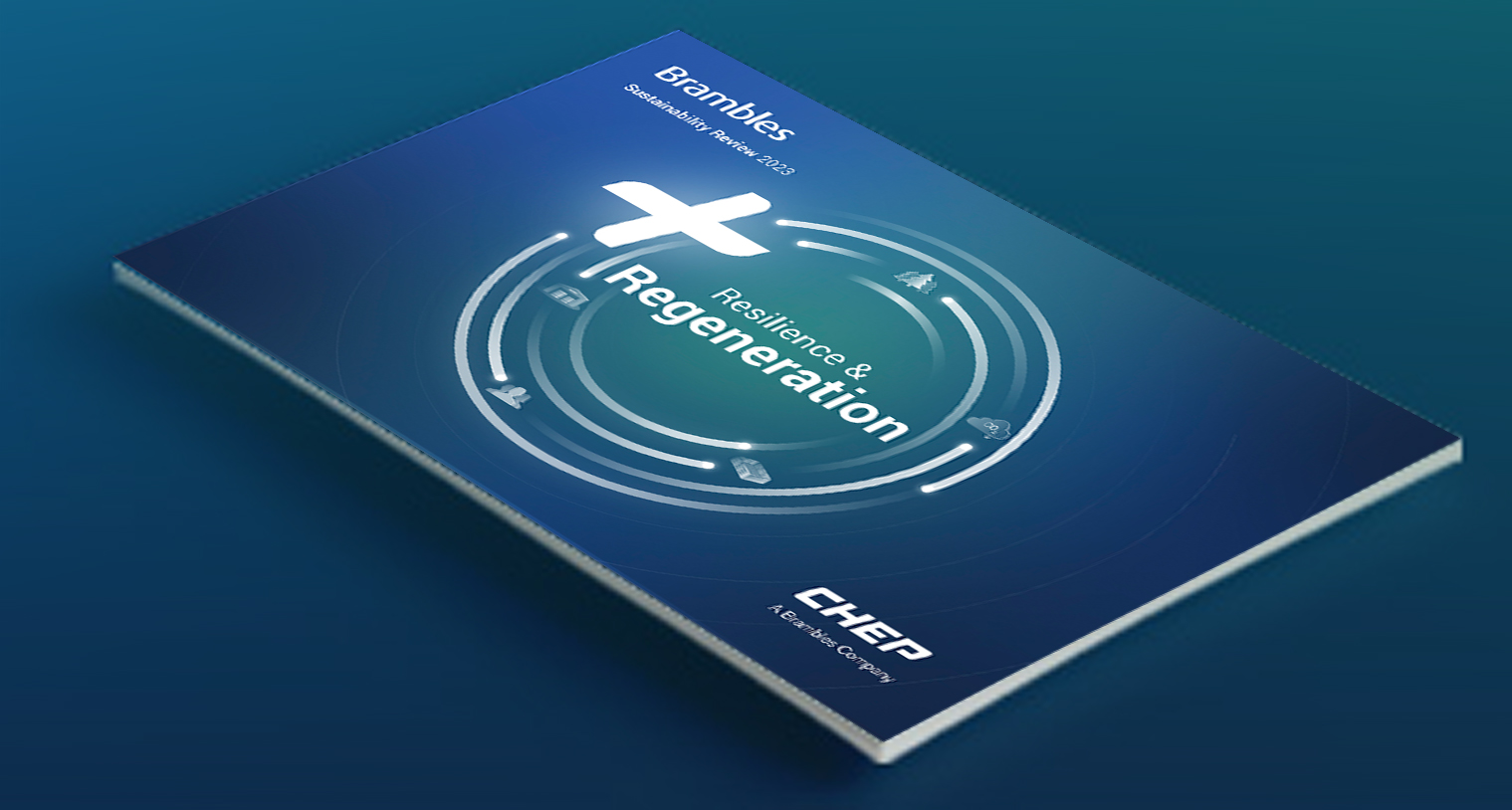| |
US$m
|
Change
|
|---|
|
(Continuing operations)
|
FY19
|
FY18
|
Actual FX
|
Constant FX
|
|
CHEP Americas
|
2,287.8
|
2,179.3
|
5%
|
7%
|
|
CHEP EMEA
|
1,849.1
|
1,815.9
|
2%
|
8%
|
|
CHEP Asia-Pacific
|
458.4
|
475.1
|
(4)%
|
3%
|
|
Sales revenue
|
4,595.3
|
4,470.3
|
3%
|
7%
|
|
CHEP Americas
|
298.4
|
334.6
|
(11)%
|
(9)%
|
|
CHEP EMEA
|
441.8
|
445.6
|
(1)%
|
5%
|
|
CHEP Asia-Pacific
|
118.3
|
111.7
|
6%
|
14%
|
|
Corporate
|
(54.8)
|
(65.8)
|
17%
|
13%
|
|
Underlying Profit
|
803.7
|
826.1
|
(3)%
|
2%
|
|
Significant Items
|
(62.8)
|
(47.4)
|
|
|
|
Operating profit
|
740.9
|
778.7
|
(5)%
|
0%
|
|
Net finance costs
|
(88.5)
|
(103.4)
|
14%
|
10%
|
|
Tax expense
|
(198.3)
|
(121.8)
|
(63)%
|
(68)%
|
|
Profit after tax from continuing operations
|
454.1
|
553.5
|
(18)%
|
(13)%
|
|
Profit from discontinued operations
|
1,013.6
|
139.2
|
|
|
|
Profit after tax
|
1,467.7
|
692.7
|
112%
|
120%
|
|
Average Capital Invested
|
4,130.6
|
4,115.4
|
0%
|
5%
|
|
Return on Capital Invested
|
19.5%
|
20.1%
|
(0.6)pp
|
(0.6)pp
|
|
Weighted average number of shares (m)
|
1,593.4
|
1,591.2
|
|
|
|
Basic EPS (US cents)
|
92.1
|
43.5
|
112%
|
119%
|
|
Basic EPS from continuing operations (US cents)
|
28.5
|
34.8
|
(18)%
|
(13)%
|
Note on FX: The variance between actual and constant FX performance reflects the strengthening of Brambles' reporting currency, the US dollar, relative to other operating currencies, particularly the Euro, British pound and Australian dollar.
IFCO divestment: In May 2019, Brambles completed the US$2.5 billion sale of its IFCO RPC business. The post-tax gain on sale of US$945.7 million and IFCO's FY19 and FY18 results have been recognised in discontinued operations.
Sales revenue from continuing operations of US$4,595.3 million, increased 7% at constant currency and exceeded the Group's stated objective of annual revenue growth in the mid-single digits, with strong volume growth being achieved despite higher pricing across the Group.
Expansion with new and existing customers delivered volume growth of 4%, with strong contributions from net new business wins in Europe and the US pallets business. Like-for-like volume growth moderated in the second half of the Year, with the slowdown particularly evident in the European pallet and automotive businesses.
Price realisation delivered 3% revenue growth across the Group driven by pricing initiatives in response to high levels of input-cost inflation, particularly third-party transport, and cost-to-serve increases.
Underlying Profit of US$803.7 million increased 2% at constant currency as the sales contribution to profit and productivity gains were partially offset by Group-wide inflationary pressures and higher costs in CHEP Americas.
Transport costs increased in both Europe and the US, in FY19, with the rate of increase moderating in the second half of the Year following high levels of inflation in the second half of FY18.
In addition to inflationary cost pressures across the Group, the CHEP Americas segment continued to be impacted by broader cost challenges in each major business:
-
In the US, the business experienced higher transport and pallet repair costs associated with changes in retailer and customer behaviour, inefficiencies related to network capacity constraints and US pallet quality investment. The US accelerated automation and lumber procurement programmes remain on track to deliver progressive efficiency benefits over FY20, FY21 and FY22;
-
In Canada, the conversion to a mixed stringer and block pallet pool resulted in additional pallet repair and transport costs as well as higher ongoing operating costs; and
-
In Latin America, profitability was impacted by increased costs to recognise a higher risk of loss in the region, notwithstanding improved asset management and a reduction in the capital intensity of the business during the Year. To address this higher cost-to-serve, the business has implemented pricing initiatives and invested in resources to support a new asset management framework focused on increased collections, improved asset controls and the active reduction in flows to high-risk areas of the supply chain.
Operating profit from continuing operations of US$740.9 million was in line with the prior year as growth in Underlying Profit was offset by a US$15.4 million increase in pre-tax Significant Items expense.
Current-Year Significant Items of US$62.8 million included US$42 million of IFCO-related restructuring and other costs, and a US$21 million expense associated with asset write-offs in Latin America, reflecting assets transferred to higher-risk supply chains in prior years which are now considered at risk of being irrecoverable.
IFCO-related items included restructuring costs of US$30 million and early debt repayment costs of US$12 million related to the US$500 million 144A April 2020 bond, which was repaid with IFCO sale proceeds in July 2019. The interest expense benefits and cash outflows associated with this early repayment will be recognised in FY20.
Profit after tax from continuing operations of US$454.1 million decreased 13% at constant FX as higher tax expense more than offset a reduction in net finance costs, largely driven by 2018 debt refinancing at lower interest rates.
Tax expense of US$198.3 million increased 68% at constant currency, reflecting the cycling of a US$65.2 million one-off credit in the prior year relating to US tax reform which was reported as a Significant Item. FY19 tax expense includes higher charges related to the introduction of the US Base Erosion and Anti-Abuse Tax (BEAT), which was also a key driver of the increase in the Group's effective tax rate on Underlying Profit from 27.4% in FY18 to 29.0% in FY19.
Net finance costs of US$88.5 million decreased by US$14.9 million, reflecting the lower coupon rate on the €500m European medium-term note (EMTN) issued in 1H18 and lower debt balances following the divestments of HFG, CHEP Recycled and IFCO. These decreases were partly offset by lower interest income following the repayment of the HFG shareholder loan in 2H18.
Basic earnings per share from continuing operations was US28.5 cents, down 18%, or 6 cents at actual FX rates, reflecting the US$65.2 million Significant Items tax credit in the prior year which accounted for 4 cents of the decline. The balance of the decrease largely related to foreign exchange movements. In constant currency terms, the decline was 13% as higher Significant Items expenses offset earnings growth in the current fiscal year.
Average Capital Invested (ACI) of US$4,130.6 million increased 5% at constant currency, largely due to capital expenditure in the year to support: volume growth in pallets and the European automotive business; Brexit-related increases in retailer inventory levels; and ongoing investment in supply chain programmes including the US automation and lumber projects funded by FY18 asset actions.
These increases in capital expenditure were partially offset by a reduction in ACI following the exit of the HFG JV and repayment of the HFG shareholder loan in 2H18.
Return on Capital Invested was 19.5%, a reduction of 0.6 percentage points at constant currency, reflecting the Underlying Profit performance and ACI balance increases in the current Year.
Cash Flow Reconciliation
| US$m | FY19 | FY18 | Change |
|---|
|
Underlying Profit
|
803.7
|
826.1
|
(22.4)
|
|
Depreciation and amortisation
|
484.3
|
464.3
|
20.0
|
|
EBITDA
|
1,288.0
|
1,290.4
|
(2.4)
|
|
Capital expenditure
|
(989.4)
|
(935.6)
|
(53.8)
|
|
US supply chain investment
|
(73.0)
|
(17.0)
|
(56.0)
|
|
Proceeds from HFG joint venture loan
|
-
|
150.0
|
(150.0)
|
|
Proceeds from sale of PP&E
|
102.5
|
103.7
|
(1.2)
|
|
Working capital movement
|
(13.2)
|
46.1
|
(59.3)
|
|
IPEP expense
|
127.1
|
101.9
|
25.2
|
|
Other
|
(10.2)
|
(14.7)
|
4.5
|
|
Cash Flow from Operations
|
431.8
|
724.8
|
(293.0)
|
|
Significant Items
|
(10.8)
|
(22.2)
|
11.4
|
|
Discontinued operations
|
135.4
|
164.0
|
(28.6)
|
|
Financing costs and tax
|
(317.9)
|
(312.2)
|
(5.7)
|
|
Free Cash Flow
|
238.5
|
554.4
|
(315.9)
|
|
Dividends paid
|
(328.1)
|
(352.0)
|
23.9
|
|
Free Cash Flow after dividends
|
(89.6)
|
202.4
|
(292.0)
|
Free Cash Flow after dividends was a deficit of US$89.6 million, reflecting a US$73 million investment in US supply chain efficiency programmes (including accelerated automation and lumber procurement initiatives) which was funded by FY18 asset actions and the impact of only 11 months of IFCO cash flows.
Compared to the prior year, FY19 cash flow decreased US$292.0 million. US$206 million of this decrease reflected proceeds from the HFG shareholder loan repayment of US$150 million included in the FY18 cash flow, and an incremental investment in US supply chain efficiency programmes of US$56 million. An additional US$60 million of the year-on-year decline relates to the reversal of FY18 working capital timing benefits as previously advised to the market at the FY18 result.
Capital expenditure (cash basis and including US supply chain investment) of US$1,062.4 million increased US$109.8 million, partly driven by the timing of capital payments.
On an accruals basis, capital expenditure increased US$91.2 million at constant currency, notwithstanding US$34 million of benefits from improved asset efficiency. The increase reflects:
-
US$63 million of additional capital expenditure to support volume growth, particularly in the EMEA automotive business;
-
US$18 million of additional capital expenditure to support Brexit-related retailer stocking;
-
US$37 million increase in non-pooling capex driven by accelerated investment in the US automation and lumber procurement projects, partly offset by lower spend across the Group; and
-
US$8 million increase in unit pallet costs due to lumber inflation.
The US$23.9 million decrease in dividend payments, driven by a weaker Australian dollar, and the US$11.4 million decrease in Significant Items outflows collectively offset:
-
A US$28.6 million decrease in cash inflows from discontinued operations reflecting 11 months of IFCO trading results in the current year compared to a 12-month contribution in FY18; and
-
A US$5.7 million increase in financing and tax outflows as a higher Australian tax instalment rate and the loss of interest income following the repayment of HFG shareholder loan in FY18 offset interest expense savings following favourable debt refinancing in FY18.



